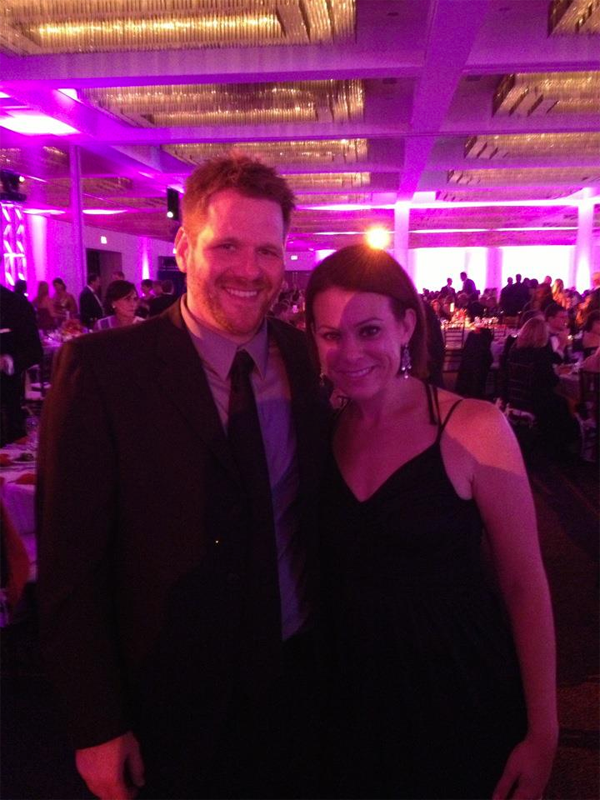The Power of Pro Bono Production: Studio Z Films and Ronald McDonald House
Studio Z Films' Steve Zugelter describes the evolution of his work with Ronald McDonald House of Greater Cincinnati over the last four years, the techniques he's used to produce increasingly intimate and story-driven films for them, and how this recurring pro bono project has benefited the local nonprofit and further established Studio Z in the River City.
The last time I wrote about Steve Zugelter of Studio Z Films, it was 2009, and he was hanging out of a helicopter, filming a bride on the rooftop of a water tower-sporting derelict building and the top of a rockpile in his hometown of Cincinnati. An up-and-coming wedding filmmaker at the time, Zugelter was shooting a short "concept" film that would establish his rep as a creative risk-taker in the wedding world, and revelling in his decision to abandon his previous career path in corporate and commercial videography, where he had rarely found opportunities to do the kind of story-driven work that inspired him. But he never ruled out the possibility of returning to corporate production on his own terms, or of doing compelling and inspiring work outside of weddings that satisfied the other ambitions he hoped to realize behind the camera.
Little did Zugelter know that the "rockpile" concept piece wouldn't just help him put his stamp on wedding filmmaking, but also lead to a prominent, recurring pro bono gig that would make a real impact on the Cincinnati community, get his work widely seen, and assist his re-entry into corporate and (paying) non-profit productions with his storytelling skills intact.
As it turned out, the bride in the concept film is part of the committee for the Ronald McDonald House of Greater Cincinnati, a chapter in the global network of Ronald McDonald Houses that provide a supportive "home away from home" at low- or no-cost to families whose children are receiving medical treatment at local hospitals—in this case, mostly Cincinnati Children's Hospital Medical Center. The local chapter of Ronald McDonald House (RMH) was looking for someone to produce a promotional video they could play at their annual Red Tie Gala and use to deliver their message in other media, and the "rockpile bride approached Zugelter to gauge his interest in the project. She made it clear that Zugelter would need to donate his time and services to the project (and pay out of pocket for the services of any production crew he brought along), but he agreed to do it, reasoning, "My wife, Reagan, and i, would love to be able to contribute, say, $5000," to worthy causes and charities in the Cincinnati community, "but we're not in a position to do that. For me, this is the best way that I can give, and what I'm able to give is so much more than I would ever be able to do financially. This is something I want to do more of, and if I can get exposure from doing this one, that's good."
The project proved a rousing success for both RMH and Zugelter—so much so that they've renewed the relationship four years running, culminating in Studio Z's most recent RMH film premiering Monday, October 8 at the 2012 Red Tie Gala and going live online on Tuesday. After four acclaimed productions, four successful (and year-by-year increasing) fund-raising campaigns, a 2011 Telly award, and multiple paying gigs with other nonprofits that he credits to his Ronald McDonald House work, Zugelter reflects on how the project has evolved over the years and how it has impacted his business and its stature in the River City—and what other producers might expect and gain from embracing these sorts of opportunities.

Steve and Reagan Zugelter at the 2012 Ronald McDonald House Charities of Greater Cincinnati Red-Tie Gala
A Learning Process
Zugelter's first effort in 2009 was a bit tentative. Both the local RMH and the associated Ronald McDonald House Charities were still new to video and uncertain about how to use it to best advantage. As a result, Zugelter says, "We didn't understand much about where it was going, how many familes we should interview, or if we should talk to their doctors." Zugelter says he ended up interviewing two families and executive director Jennifer Goodin, and used very little b-roll, resulting in a film that consisted of mostly talking heads.
But that first film, and the second, which they shot in 2010 following the same template—but with a bit more b-roll and some other modest improvements— more than met the project goals, delivering the message to the 600 attendees at the Red Tie Galas "about what the house does and how it helps families through the trials that they go through. Helping people relate to the families was our main point," Zugelter explains, and the first two films achieved that.
2010:
Ronald McDonald House from Zug Media on Vimeo.
But in 2011, Zugelter pitched a more story-driven approach—less executive director, more b-roll, and focused primarily on the experience of a single family who had brought their daughter to Cincinnati for cancer treatments. "Let's go into the hospital. Let's go through the house, and let's show this family in the dining area, playing games together, and let's show what families actually go through and how they live their lives here, really pulling on the heartstrings."